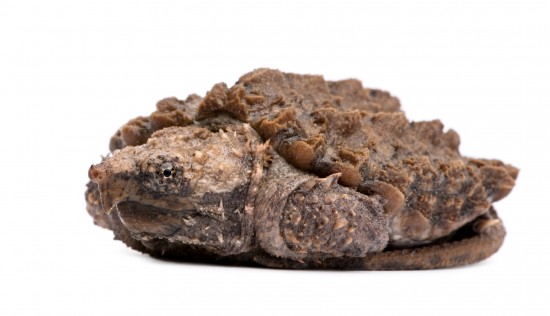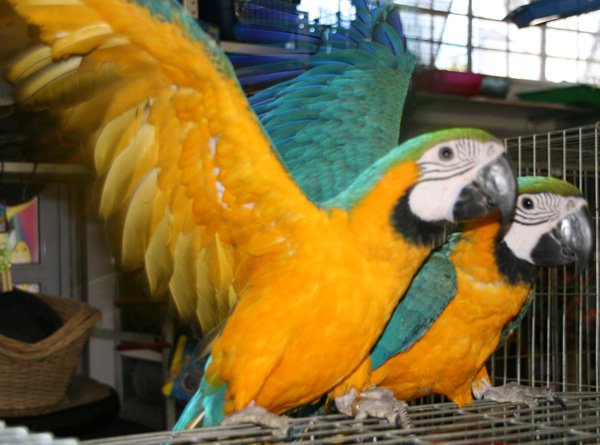Approximately fifty species of cavity-nesting birds accept birdhouses, thirty-five of them do so on a regular basis. Man-made nest boxes can provide important cavities for many of these species, because natural cavities in snags (dead trees) and large live trees are increasingly in short supply, especially in city and suburban yards. The birds don抰 find much in the way of accommodation in these areas, so if you provide artificial holes for them and pay some attention to detail, you抣l be able to attract specific birds and exclude those that are less desirable. If you provide a place for them to nest, you抣l enjoy seeing them frequently at close range. Also, birds that use nesting boxes tend to be prodigious insect eaters, which is an added reason for furnishing them.
Choose the site for putting up a birdhouse carefully. Nesting boxes for forest species like chickadees and woodpeckers must be mounted directly on trees. Otherwise, those hung in or fastened to trees should be clear of the main trunk and placed where sunshine can reach them. It抯 a good idea to position new birdhouses in the autumn before the leaves fall so you can be sure the spots won抰 be too dark and gloomy. Baby birds, like all growing things, need sunshine.
Nesting time will vary with the bird species, as well as your geographical location. For same year occupancy, nesting boxes should be in place no later than January in the southern tier of states, February for the middle tier and March in the northern states and Canada. If birds seem to be ignoring the houses you抳e installed, be patient. Sometimes a brand new house is viewed with suspicion, and the birds will be more likely to accept it once it has weathered a bit ?another reason why fall is a great time for putting up new houses.
It抯 easy to provide features that will make the nesting boxes more attractive as residences. Birds might spook if they fly to an entrance hole and find the inside of the box pitch black, so choose boxes with ventilation holes near the top of the sides (or drill your own) to provide some light as well as fresh air. Wood chips and shavings on the bottom of the box will be welcomed, and for chickadees and small woodpeckers you can completely fill the box with shavings and let the bird make its own cavity. Don抰 use sawdust as it doesn抰 ventilate and dehydrate as well as chips. Offer nesting materials where the birds can find them without trouble if you really want to make them happy!
Make sure you can access the box easily, as it should be cleaned out each fall when the nesting season is over to cut down on parasites like mites and lice, and discourage mice from nesting there. Clean between broods as well.
Pick an area without lots of disturbance and avoid having the entrance to the nesting box face a busy road. Make sure to place it near escape cover so fledglings can hide and avoid being eaten by the neighborhood cat while developing their flying skills. In southern regions, it makes sense to have the entrance face north to avoid heat buildup in the box; in northern regions, having the entrance face south might help to keep it warm.
Four to five houses per acre is about right as you don抰 want to create a bird slum.
Predators, such as cats, squirrels, raccoons, rats and snakes, will always be a problem, so in most areas complete protection is probably not possible. However, there area several things you can do to help keep the nest safe:
?If the house is mounted on a post that cats or squirrels can climb, wrap the post with sheet metal.
?Be precise on the entrance hole size necessary for the birds you wish to attract.
?Mount a cone-shaped metal guard beneath the house.
?Attach a block of wood 1 inch thick with a hole the same size as the entrance hole over the front of the box, creating a short tunnel which will help prevent squirrels or raccoons from reaching into the nest. Make sure to sand the hole in the block so it is smooth.
?Perches aren抰 needed on a nesting box and will only serve to attract house sparrows and starlings.
Four to five houses per acre is about right as you don抰 want to create a bird slum.
It抯 difficult to predict what birds will like when it comes to their houses, but it is generally assumed that most birds prefer natural-looking ones, so use brown, tan or grey stain or paint for the exterior finish. However, some studies have indicated that wrens prefer red or green houses and will choose white ones only as a last resort. The interiors of nesting boxes should always be left unfinished.

 Which Dog Leash Is A Better Choice?
Which Dog Leash Is A Better Choice?
 18 Questions About Genetics That Responsible Breeders Should Know The Answers To
18 Questions About Genetics That Responsible Breeders Should Know The Answers To
 Snapping Turtles A Prehistoric Monster In Your Tank
Snapping Turtles A Prehistoric Monster In Your Tank
 An Automatic Dog Waterer is Ideal for Dog Lovers
An Automatic Dog Waterer is Ideal for Dog Lovers
 Up Scale Dog Boarding Facilities are the Perfect Solution
Up Scale Dog Boarding Facilities are the Perfect Solution
 Larger Dog Breeds And Digestive Issues
Larger Dog Breeds And Digestive Issues